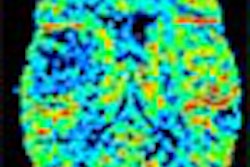SAN FRANCISCO - Women who are treated for early breast cancer with radiotherapy run a small, but hardly negligible, risk of developing cancer in the contralateral breast, according to a poster presentation Sunday at the American Association for Cancer Research (AACR) conference.
Dr. Xiang Gao from the Central Arkansas Radiation Therapy Institute in Little Rock and his colleagues investigated the potential risk factors in women treated with radiotherapy for invasive breast cancer and ductal carcinoma in situ (DCIS). Gao’s co-researchers hailed from the University of Rochester in New York and Loyola University Medical Center in Maywood, IL.
The NCI’s Surveillance, Epidemiology, and End Results database (SEER) was used to track the incidence of contralateral breast cancer (CBC) following treatment. The Cox proportional hazards regression model was used to estimate the relative risk of CBC with adjustments for age, race, histology, and radiotherapy.
A total of 134,501 patients with either DCIS or localized primary unilateral invasive breast cancer were identified, with 28% of these patients undergoing radiation therapy. Follow-up was available for 919,046 person-years, with patients followed for as long as 20 years.
According to the results, a CBC was documented in 4.2% of all patients. An increased chance of CBC was associated with medullary carcinoma (1.18 relative risk), African-American patients (1.20 relative risk), and women over 55 at initial diagnosis (1.15 relative risk).
During the first five years of follow-up, radiotherapy was not associated with an increased CBC risk. However, for patients surviving five years or longer, the group found a 14% increase in CBC risk.
The absolute increase in overall CBC risk associated with radiotherapy in actuarial rates was as follows:
- 5-year follow-up, 3% actuarial rate of CBC, no increased CBC risk.
- 10-year follow-up, 6.1% actuarial rate of CBC, 0.5% increase in CBC risk.
- 15-year follow-up, 9.1% actuarial rate of CBC, 1.3% increase in CBC risk.
- 20-year follow-up, 12% actuarial rate of CBC, 1.6% increase in CBC risk.
Despite these less-than-alarming numbers, the take-home message for radiation therapists is that unnecessary radiation exposure to the contralateral breast should be avoided during treatment, Gao said.
"This is not evidence against breast conservation therapy because the risk is so small," Gao told AuntMinnie.com. "Instead, this should encourage radiation therapists to fine-tune their technique and cut down on the radiation dosage."
Gao said his group’s next step would be to take a closer look at the DCIS subset group and their secondary risk for cancer following radiation therapy.
By Shalmali PalAuntMinnie.com staff writer
April 9, 2002
Related Reading
Socioeconomic status effects US breast cancer care more than race, April 4, 2002
Intraoperative radiotherapy for breast cancer may obviate external radiotherapy, March 25, 2002
Radiation during surgery may aid breast cancer care, March 22, 2002
Additional irradiation of breast tumor bed lowers recurrence risk, November 8, 2001
Breast conserving therapy rates may depend on access, November 6, 2001
Copyright © 2002 AuntMinnie.com



















